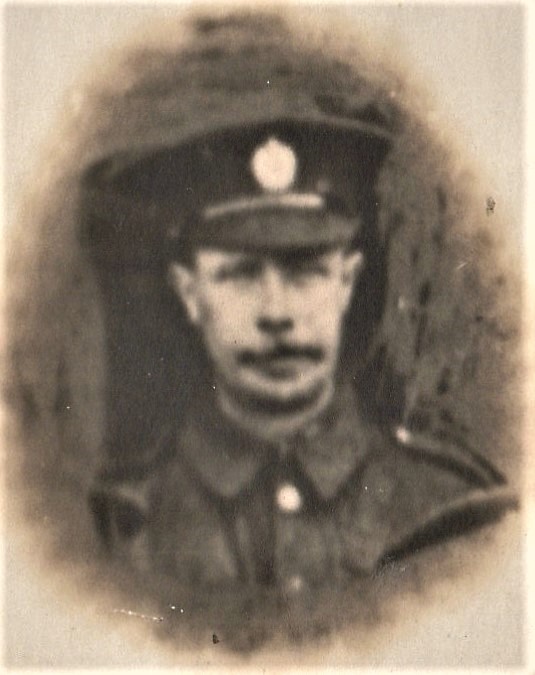Pte
William Walker Aston
Information about birth
|
Date of birth: 18/11/1878 |
|
Place of birth: Chester, Cheshire, England, United Kingdom |
General information
|
Profession: Electric wireman |
Army information
|
Country: England, United Kingdom |
|
Force: British Expeditionary Force |
|
Rank: Private |
|
Service number: 23530 |
|
Enlistment place: Tottenham, Middlesex, England, United Kingdom |
|
Units: — Royal Warwickshire Regiment, 1st/6th Bn. (Last known unit) — Royal Warwickshre Regiment 11th Battalion |
Information about death
|
Date of death: 04/10/1917 |
|
Cause of death: Killed in action (K.I.A.) |
|
Age: 38 |
Memorial
|
Tyne Cot Memorial Panel: 24 |
Distinctions and medals 2
|
British War Medal Medal |
|
Victory Medal Medal |
Points of interest 2
| #1 | Place of birth | ||
| #2 | Enlistment place |
My story
Private William Walker Aston was born on the 18th of November 1878 in Chester, Cheshire, England, to William Aston and Elizabeth Read. His father worked as a newsagent / bookseller and William was the third of five children. William would eventually end up working as an electric wireman and settle down in Tottenham with his wife Jane Aston (nee Smith) whom he married on the 7th of March 1904. Together they had six children.
William enlisted in Tottenham, Middlesex, England where he would first serve with the Royal Engineers and the 11th Battalion Royal Warwickshire Regiment before being taken on by the 1st/6th Battalion Royal Warwickshire Regiment (143rd Brigade, 48th Division).
On the 4th of October 1917 the 1st/6th Battalion Royal Warwickshire Regiment would partake in the Battle of Broodseinde, a sub battle in the Battle of Passchendaele 1917. The battalion would attack in the centre of their assigned sector. The attack would follow with the standard artillery barrage followed by the advancing troops. The German posts on the Western bank of the Stroombeek were captured with relative ease and with few losses. However, after advancing for some 200 yards, they came under heavy fire from their right and from the area around York Farm which led to heavy casualties. Eventually both York Farm and Winchester Farm, as well as Wellington Farm, were taken and the advance went on. However, the advance came to a halt some 300 yards west of Vacher Farm. That day the 1st/6th Battalion Royal Warwickshire Regiment reported 33 men killed, another 33 missing and 158 wounded. Private William Walker Aston being amongst those killed. As his remains were never found or identified, he is commemorated at the Tyne Cot Memorial on panel 24.
William enlisted in Tottenham, Middlesex, England where he would first serve with the Royal Engineers and the 11th Battalion Royal Warwickshire Regiment before being taken on by the 1st/6th Battalion Royal Warwickshire Regiment (143rd Brigade, 48th Division).
On the 4th of October 1917 the 1st/6th Battalion Royal Warwickshire Regiment would partake in the Battle of Broodseinde, a sub battle in the Battle of Passchendaele 1917. The battalion would attack in the centre of their assigned sector. The attack would follow with the standard artillery barrage followed by the advancing troops. The German posts on the Western bank of the Stroombeek were captured with relative ease and with few losses. However, after advancing for some 200 yards, they came under heavy fire from their right and from the area around York Farm which led to heavy casualties. Eventually both York Farm and Winchester Farm, as well as Wellington Farm, were taken and the advance went on. However, the advance came to a halt some 300 yards west of Vacher Farm. That day the 1st/6th Battalion Royal Warwickshire Regiment reported 33 men killed, another 33 missing and 158 wounded. Private William Walker Aston being amongst those killed. As his remains were never found or identified, he is commemorated at the Tyne Cot Memorial on panel 24.
Sources 6
|
Ancestry https://www.ancestry.co.uk/ Sources used |
|
Charles Lethbridge Kingsford, The story of the Royal Warwickshire Regiment (Formerly the Sixth Foot) (London: Country Life, 1921.), 170-1. Sources used |
|
CWGC https://www.cwgc.org/find-records/find-war-dead/casualty-details/846486/william-aston/ Sources used |
|
The Long, Long Trail https://www.longlongtrail.co.uk/ Sources used |
|
War Diary, 1st/6th Bn. Royal Warwickshire Regiment http://www.nmarchive.com/war-diary-result/2755-3639/page/0 Sources used |
|
War Diary, 48th Div. 143th Bde. Headquarters http://www.nmarchive.com/war-diary-result/2754-3637/page/0 Sources used |
